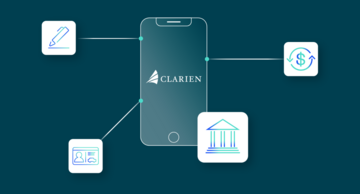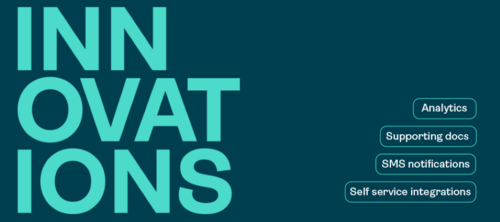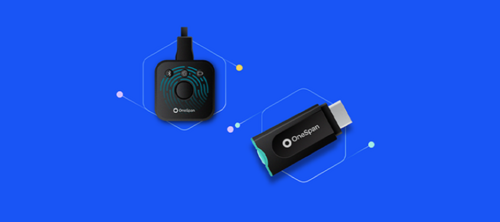Clarien Bank: Digital account opening transformation best practices

Clarien Bank is one of Bermuda’s largest independent integrated financial services organizations with assets of US$1.36 billion. The bank provides retail banking, corporate and private banking, as well as wealth management and investment services.
In 2021 Clarien Bank digitized their account opening processes with electronic signature and digital identity verification technologies from OneSpan. The initiative was so successful that Clarien Bank was named the winner of the Mobile App of the Year at the 2022 Tech Innovation Awards hosted by the Bermuda government’s Economic Development Department.
You can see Clarien Bank’s award-winning account opening process in action here:
Why digital account opening was the primary focus for transformation at Clarien Bank
In discussing the bank's digital transformation initiatives, Michael Decouto, Chief Digital & Marketing Officer at Clarien Bank, explains that:
“Digital account opening and ID verification is our primary focus. We have a significant roadmap to digitize all account opening, whether that be traditional savings or checking accounts, straight through to applying for a loan or a mortgage or prepping for an investment account.”
The bank shared their best practices and insights from the project at a recent event on digital banking in the remote-first era. This article summarizes Clarien Bank’s best practices for achieving digital account opening success, including the importance of developing a customer-centric digital culture and how to set the foundation for successful digitization and modernization initiatives.
1: How Clarien Bank developed a digital culture to achieve account opening transformation success
“The digital culture of our organization
is an integral part of achieving our digital goals
and delivering on our brand promise.”
– Michael Decouto, Chief Digital & Marketing Officer, Clarien Bank
When it comes to creating digital-first customer experiences, Decouto emphasizes how important it is to start from within the organizational culture to establish digital-centric thinking. Engaging your customers means empowering your employees with the proper training and investments that build their digital skills and knowledge, and involving them in your digitization projects. Customer-facing employees are key to defining the end-to-end customer journey, and evaluating how to mitigate friction points and optimize client interactions.
To create the best digital journey for customers, it’s critical to first develop digitized internal operations and processes for employees to follow so that they can service digital customers successfully.
In addition, people with traditionally in-person operational tasks can be upskilled and/or reskilled to fit higher value, higher-touch, customer supporting roles. For example, Clarien Bank created digital concierge roles, where employees help customers through any hurdles they experience during their digital journey.
2: Leverage data to make remote banking easier for customers
Based on Clarien’s experience when creating and implementing digital user experiences and workflows, Decouto suggests that banks should leverage data to set them up for success.
It’s difficult to set up the right processes and improve services without the right data. This includes data about customers, like demographics and the types of services and products they use. Leveraging data is not only about using information to implement digital solutions, but understanding which solutions best meet the needs of your customers. There are many types of interactions that customers experience during their digital journeys, and data analytics will help you understand any points of friction they might go through.
3: Understand customer friction points and remove paper from account opening processes
New digital services are being implemented across almost every industry as the need for digitization increases. With a high rate of change taking place over a short period of time, it’s understandable that customers are experiencing higher degrees of frustration. It’s essential to identify and develop solutions that address these points of friction in order to create better digital experiences for customers, meet their expectations and foster loyalty.
Financial institutions have traditionally offered mainly paper-based banking services to customers. Although regulatory compliance is mandatory, there are ways to simplify and digitize paper processes. For Clarien Bank, the core issues included:
- The number of forms that customers had to fill out and sign as part of an account opening
- The need for customers to visit physical branches multiple times to conduct their business
- Barriers to opening accounts in a single sitting
Clarien Bank wanted to streamline their process so customers could open an account digitally in one sitting. To do so, they integrated their online banking portal and mobile app with OneSpan Sign electronic signature technology so that customers were able to complete their sign-up and onboarding online. This allowed documents to be pre-populated using data submitted by the customer during the earlier stages of application.
4: Digitize the identity verification step
As part of Clarien Bank’s original paper process, the customer would have to bring in a passport or a valid driver's license or another acceptable form of identification, and it would need to be handed over to the banker who then had to photocopy it and then verify the ID. Then it was placed into a paper trail, which went to the bank’s operations department or compliance team for further verification. Ultimately, this meant accounts were unable to be opened in real time.
“There was a delay in opening the account, in fulfilling a personal goal of that customer to start a savings plan or to make a purchase – because it was such a burdensome exercise in terms of having to collect the data, capture their identity, and verify it. There were many different opportunities for risk and failure," Decouto explains.
To solve this issue, Clarien Bank turned to the ID verification option in OneSpan Sign to run identity checks in real time. This capability validates the identity of the user and then allows them to sign documents with their e-signature. Not only did this reduce the number of steps in the remote account opening process, it also removed touchpoints where customers could potentially struggle and drop off. On top of that, customers can now do everything using their mobile device.
From a customer experience perspective, going through the identity proofing process on your phone is relatively easy to do. And the result for the bank is a high level of identity assurance.
The process is simple. The customer takes a photo of their ID, which could be a driver's license or passport. OneSpan's digital identity verification technology uses artificial intelligence and runs a number of forensic checks in real time to ensure it's an authentic ID. Then, for additional security, the financial institution can layer on facial biometrics to compare the photo on the government-issued ID with a selfie of the customer.
Integrate human help into the customer account opening process
Consumers are already used to doing many of their regular financial activities via computer or mobile device. They pay bills, check their account balance, send money to their families, etc. However, it becomes an issue when more complex tasks are required. For more complicated activities where customers need support, information, or have questions, self-service channels are not enough.
Instead of creating a divided experience between digital and physical/in-person journeys, OneSpan offers the ability to do a human-digital “blended experience” to bring together the best of both worlds. Banks can enrich the digital experience with face-to-face interaction in a digital environment. This way, customers can reach out to account representatives and customer service people through a bank’s digital platforms and talk face-to-face via camera, share documents, collaborate on documents, review financial records, and get human help in a digital environment.
Digital transformation in banking: Best practices for success from Clarien Bank
Following these best practices enables banks to reduce points of friction and transition customers to digital channels. Decouto also lists some final tips for success when pursuing account opening digitization:
- Be specific when identifying the business processes you want to tackle
- Determine measurable outcomes that define success
- Actively listen to customers’ needs and identify points of friction
- Analyze the data you gather to ensure you can quantify and address customer needs
- Get your whole team to collaborate on developing solutions
- Use lessons learned from other successful organizations with mature digital banking models
- Use results from research and marketing studies that have already been conducted
- Find a reliable digital solution from providers like OneSpan
How OneSpan’s eSignature and identity verification solutions help Clarien Bank achieve digital account opening success
By integrating with OneSpan’s, Clarien Bank has been able to digitally transform its account opening process and create a better, more personalized experience for clients. The bank adopted a digital-first culture that incorporates and empowers its employees at every stage of the digitization journey. The success of Clarien Bank’s mobile app and digital account opening process demonstrates have how easy and secure it can be to achieve your digital transformation strategy by integrating technologies such as eSignatures and digital identity verification.
To learn more about OneSpan’s electronic signature and digital identity verification capabilities contact us or access an online demo.









